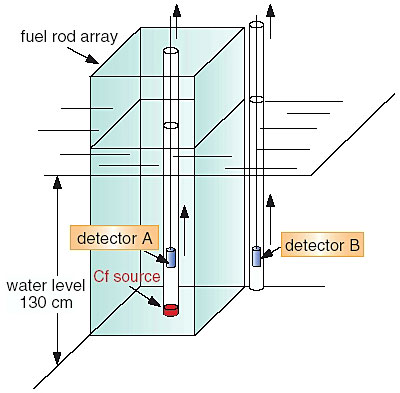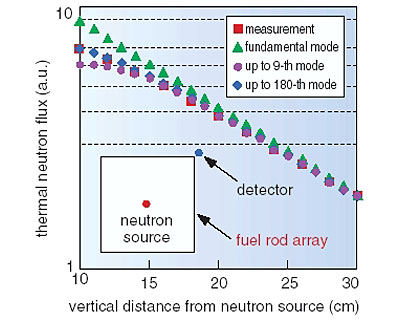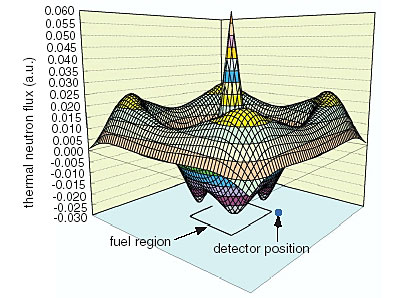Spent fuel assemblies taken from nuclear power plants shall be stored in storage pools with assured nuclear criticality safety. It has been well known that the exponential method is an effective method for measuring how far the fuel configuration in a spent fuel storage pool is from criticality, (i.e., subcriticality). In the exponential method, the vertical neutron flux distribution is measured to obtain the decay constant in the exponential function, as shown in Fig. 3-8. What is measured by this method, however, is only the superposition of an infinite number of higher-harmonic fluxes, as seen in the vibrations of a stretched string. To measure subcriticality, it is necessary to extract the fundamental flux mode from an infinite number of higher-order fluxes, because the fundamental flux mode corresponds to the mode closest to criticality. As shown in Fig. 3-8, neutron flux distributions were measured in a subcritical experimental configuration at the Light-water Moderated Critical Assembly TCA to investigate how higher-harmonic fluxes are excited. A calculation method was also developed, by which decompose the neutron flux distribution obtained with the exponential experiment can be transformed into the superposition of higher-harmonic fluxes.
Fig. 3-9 shows that the neutron flux distribution near the neutron source is smaller than the fundamental mode flux due to the negative higher-harmonic flux (Fig. 3-10), and that the fundamental mode can be measured in the region further than 20 cm from the source. While the neutron flux distribution was not reproduced well by using the higher-harmonic fluxes up to the 9-th mode, the reproduction was found to be improved by taking into account the higher-harmonic fluxes up to 180-th mode.
The development of the higher-harmonic analysis method for the exponential experiment will contribute to the advancement of subcriticality measurement techniques and to the practical use of the exponential method in commercial facilities, such as fuel storage facilities.
|


